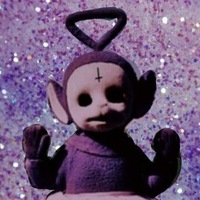
"Любое человеческое творение, будь то литература, музыка или живопись - это всегда автопортрет".
Объясните свое понимание этой мысли, аргументируйте ее ( два конкретных примера). 0
0
 0
0
Ответы на вопрос
 Внимание! Ответы на вопросы дают живые люди. Они могут содержать ошибочную информацию, заблуждения, а также ответы могут быть сгенерированы нейросетями. Будьте внимательны. Если вы уверены, что ответ неверный, нажмите кнопку "Пожаловаться" под ответом.
Внимание! Ответы на вопросы дают живые люди. Они могут содержать ошибочную информацию, заблуждения, а также ответы могут быть сгенерированы нейросетями. Будьте внимательны. Если вы уверены, что ответ неверный, нажмите кнопку "Пожаловаться" под ответом.

 0
0
 0
0

Understanding the Quote "Любое человеческое творение, будь то литература, музыка или живопись - это всегда автопортрет"
This quote suggests that any human creation, whether it's literature, music, or painting, is always a self-portrait. In other words, the quote implies that creative works are a reflection of the creator's inner thoughts, emotions, and experiences.
My Interpretation and Argumentation
I interpret this quote as emphasizing the deeply personal nature of artistic expression. When individuals create something, they inevitably infuse it with their own perspectives, feelings, and experiences. This can be seen in the following two specific examples:
1. Literature: In literature, authors often draw inspiration from their own lives, beliefs, and struggles. Their writing style, choice of themes, and character development can reflect their personal experiences and worldview. For instance, the Russian author Fyodor Dostoevsky's novel "Crime and Punishment" delves into the psychological complexities of its characters, mirroring Dostoevsky's own philosophical and moral inquiries.
2. Music: Musicians often express their emotions and experiences through their compositions. The renowned composer Ludwig van Beethoven's Symphony No. 9, particularly the "Ode to Joy" movement, is considered a reflection of his personal triumph over deafness and a celebration of the human spirit.
In both these examples, the creators' personal experiences and emotions are intricately woven into their works, supporting the idea that artistic creations serve as self-portraits of the individuals behind them.
This interpretation aligns with the notion that art is a form of self-expression, allowing creators to convey their innermost thoughts and feelings to the audience.
Would you like to explore more examples or delve deeper into this topic?
 0
0
 0
0
Топ вопросов за вчера в категории Музыка
Последние заданные вопросы в категории Музыка
-
Математика
-
Литература
-
Алгебра
-
Русский язык
-
Геометрия
-
Английский язык
-
Химия
-
Физика
-
Биология
-
Другие предметы
-
История
-
Обществознание
-
Окружающий мир
-
География
-
Українська мова
-
Информатика
-
Українська література
-
Қазақ тiлi
-
Экономика
-
Музыка
-
Право
-
Беларуская мова
-
Французский язык
-
Немецкий язык
-
МХК
-
ОБЖ
-
Психология
-
Физкультура и спорт
-
Астрономия
-
Кыргыз тили
-
Оʻzbek tili















